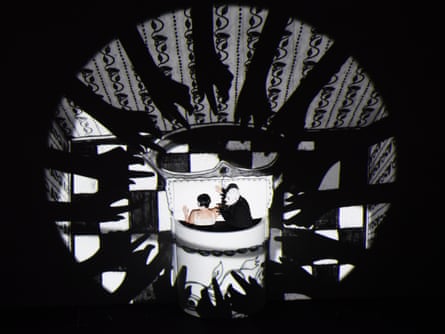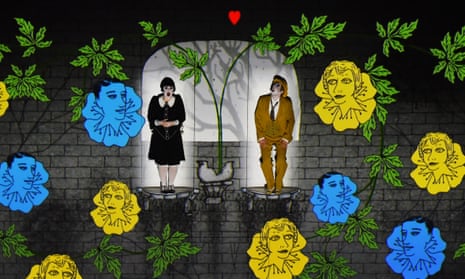One of the challenges facing opera makers is how to stage a three-hour production and make it relevant and interesting to a generation who have a 10-minute attention span.
But Barrie Kosky has pulled it off. The hottest show at this year’s Perth festival is Mozart’s The Magic Flute, running at two hours and 40 minutes – and with not a single dull scene.
Tickets to The Magic Flute sold out quickly, with the production moving to the Adelaide festival next month and extra dates added. (The Adelaide festival has just announced that The Magic Flute has broken its box office records for an opera.)
The Berlin-based Australian director Barrie Kosky, the illustrator Paul Barritt and the writer Suzanne Andrade of the theatre company 1927 have done to Mozart what Baz Luhrmann did to Shakespeare in the incredible 1996 film Romeo + Juliet. That is, they have reimagined and evolved an old story so thoroughly and energetically that it has lifted the bar for any subsequent retelling.

Kosky’s production of The Magic Flute was first staged in Germany in 2012, and according to an early Guardian review: “There are the makings of a classic here.”
By the time the production arrived in Australia, showing for the first time at the Perth festival, it had played to more than half a million people in 22 cities worldwide. These are staggering numbers for a production of a Mozart opera, making it one of the most commercially successful productions in recent times.
Just as Luhrmann frictionlessly transposed Shakespeare’s love story on to modern, warring mafia-style families (dressed in vintage Hawaiian shirts, angel’s wings and white satin dresses and, memorably in the case of Tybalt – a red vest emblazoned with the face of Jesus), Kosky’s characters, with their Louise Brooks bobs and tuxedos, are straight from the silent film era.
The choice works well. Characters don’t speak but their thoughts and words appear in evocative 1920s font, projected on to the stage.
The key to the aesthetic is Barritt’s animation. The projections – which require performers to learn about 900 live cues – caused audiences in the show I saw to gasp with delight.

There are flying elephants, a massive spider, a steamer trunk full of magic dancing girls, a frightened dog and drone-like creatures that lurk menacingly over the performers’ heads.
The overall design is familiar to anyone who has seen a 1927 production (the company has toured several times to Australia) and references steampunk and Weimar expressionism.
Kosky told the ABC: “We wanted it very much to look as if a picture book had come alive — to look as if a silent film had been warped and hallucinated into colour.”
Some people go to the opera to sleep. Not this production. Seeing it is the equivalent of drinking 10 cups of coffee. There is so much stimulation and so many eye-popping visuals to take in, you’ll be reliving scenes in your head for weeks to come.
